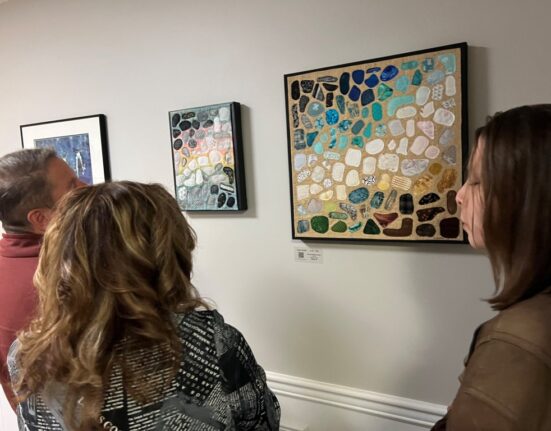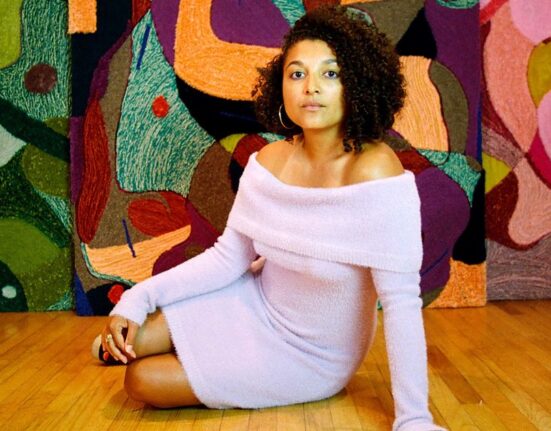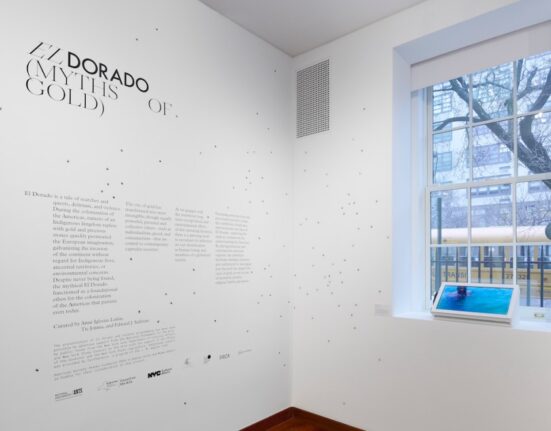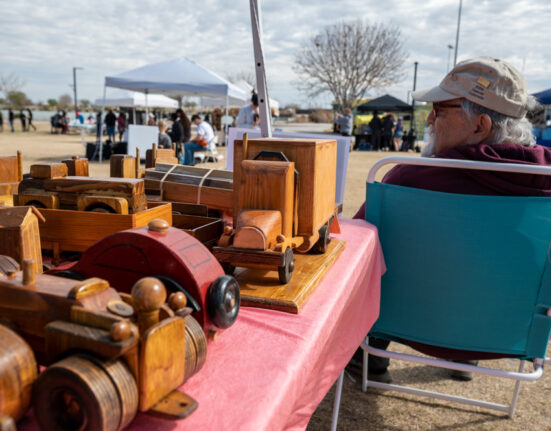Yet she would continue to struggle with not feeling accepted at various points in her life. When she attempted to share her paintings while she was still a student, a teacher told her, “Stick to your photos.” For years, her experience with the art world in New York was ostracizing. She’d go to all of the openings at galleries and museums and art fairs, but “I never, ever saw any Black art, let alone another Black person looking at the art,” she said. “I was like, ‘Where is everybody?’”
Many in the market now see Black art as a monolith but, aside from the race of her subjects, Mckinney’s work shares little in common with other contemporary Black painters. She doesn’t paint from history, like Kerry James Marshall or Henry Taylor, artists who explicitly depict inequality and violence in America. But she doesn’t paint figures in her life, either, like Njideka Akunyili Crosby or Jordan Casteel, who use family and friends as models to create scenes of exceptional personal intimacy; Mckinney’s only painting like this is a portrait of her daughter, now 2, which she has no intention of selling, much less sharing with anyone other than her husband. Her paintings aren’t of specific people, and yet they are inspired in part by her own experience with exclusion. Last July in her studio, she showed me a box of clippings from old magazines, which she’d found on eBay and in thrift stores, with a particular eye for Eisenhower-era decorating magazines, Vogues and Ebonys. She also has a few Playboys from the 1970s, about which, she said, “Honestly, I like to see women that are not boobed up, plastic surgeoned up. It feels really natural.” When she finds a pose or room she likes, she’ll cut it out of the magazine and use it as a template, mixing and matching images in collages and creating her paintings from there. “I never saw myself in a magazine,” she’d told me earlier. “Meaning, a Black woman with Black skin.”
Her paintings are “my way to show that”: a rather simple proposition but radical, too. The canon of Western painting includes relatively few portraits of Black women, figures whom critics and historians have largely ignored even when artists didn’t. The most famous exception is the maid in Édouard Manet’s 1863 painting “Olympia,” who stands over a white prostitute, clutching a bouquet of flowers, her expression either distracted or evasive. The woman for whom she works is lying in bed, confidently holding the viewer’s gaze, nude except for a pair of white heels and a pink flower in her hair. The power dynamic between the two has been the subject of much critical discourse. In a 1992 essay titled “Olympia’s Maid: Reclaiming Black Subjectivity,” O’Grady herself argues, “It is the African female who, by virtue of color and feature and the extreme metaphors of enslavement, is at the outermost reaches of ‘otherness.’” O’Grady is referring to the maid in “Olympia” (she was a recurring model for Manet who appears in the lesser-known circa 1862 work “La Négresse”) but also to Black women generally in modern art.







